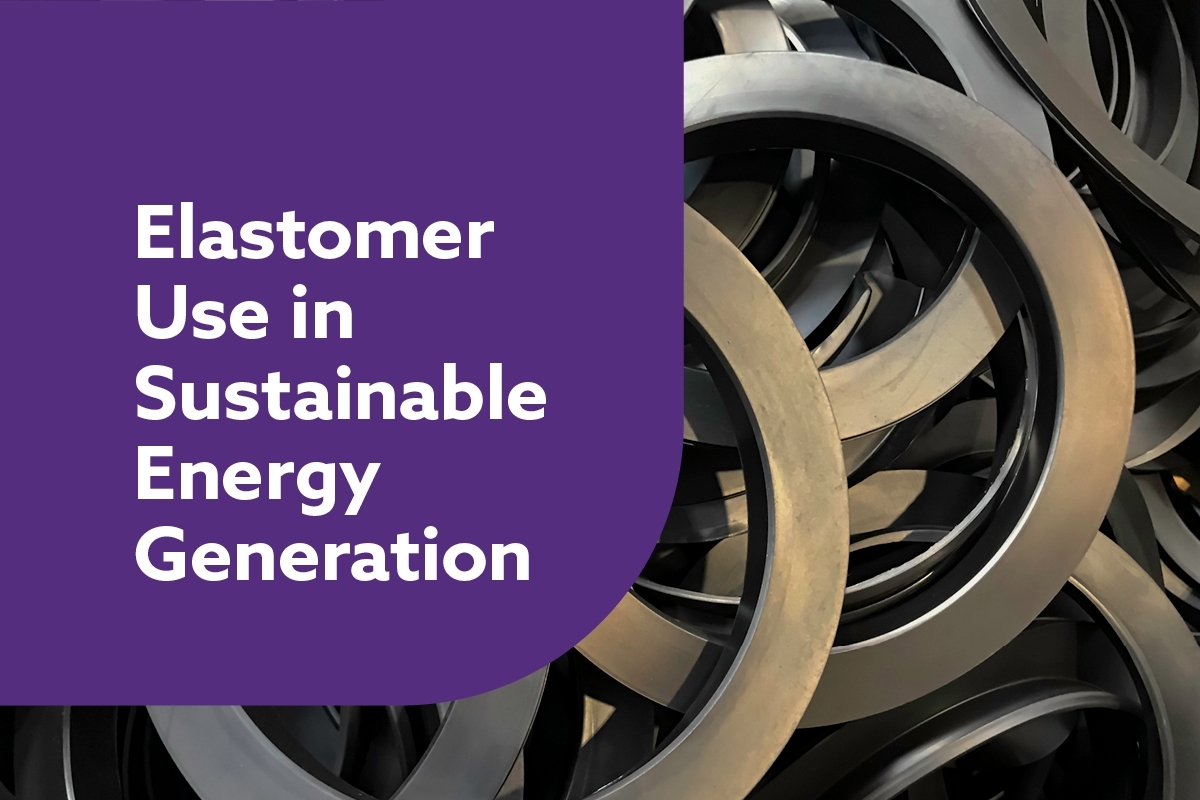Elastomer Use in Sustainable Energy Generation

You will hear from:
- Dr Ashley Johnson
Scientific Advisor, Schlumberger Cambridge
Research on Geothermal Energy - Why do we need it? How do we get it?
The role of geothermal energy as a key element in any sustainable energy strategy providing base power and network stability will be discussed. There are challenges of drilling into heterogeneous very hard but heavily fractured formations. Sophisticated tools and hardware are needed to ensure conduits do go in the right place. Temperatures are well above 200°C and pressures are up to 100 MPa, both of which create extreme performance requirements for the elastomers used. - Professor Christopher Bowen
Professor of Materials, University of Bath
Elastomeric materials for energy and harvesting applications
The presentation provides an overview of the application of elastomer materials for energy and harvesting applications. This will include potential for use in dielectric elastomer generators and piezoelectric systems for conversion of mechanical motion into electrical power. Aspects related to materials design will be considered, for example the impact of permittivity, dielectric breakdown, and stiffness on performance and consideration to development of composite based materials. Aspects related to self-healing of properties will also be explored, such for recovery of dielectric properties after being subjected to conditions of high electrical stress. - Tom Mackay
Senior Mechanical Engineer/Engineering Consultant, TTI Ltd
Inflatable elastomer membrane structures for wave energy devices
The development of wave energy convertors (WECs) is still a nascent field but one that offers significant potential to provide renewable electrical energy. There are a broad range of WEC types under development and the slow commercial roll-out of these devices is partly due to the challenging environment and the commercial pressures on Levelised Cost of Energy. A key aspect of energetic wave sites is the ratio between the majority of waves (operational waves) and the extreme survival waves that occur infrequently in storms. The hydrodynamic loading imparted by the large storm waves means that floating steel structures (conventional approach) need to be extremely strong which drives up cost and mass (which is undesirable for performance) and is structurally inefficient. All WECs need a water displacing volume (that is usually buoyant) in order to capture the energy from the waves and generally the larger the volume the more powerful the device – but the structural challenge becomes more severe. - Shing Hon Wong
Senior Product Engineer – Key Industries, James Walker & Co
Walkersele X-Gen: Seal Developments For Offshore Wind Energy
Offshore wind energy has grown significantly in recent times, and has seen an ever increasing quest for larger more efficient turbines, with nameplate capacities approaching in excess of 15MW. This capacity sees a greater demands placed on drive train components, most notably the main bearings, where large deformations can be observed. These deformations, coupled with demands for increased efficiency, creates sealing challenges for these bearings.James Walker underwent a comprehensive development process resulting in the Walkersele X-Gen, featuring an innovative rubber and glass fibre composite construction with a new lip geometry suited to the sealing of grease, and an engineered finger spring moulded into the seal body to ensure constant seal contact in the most extreme deformation cases.
-
Injamamul Arief
Research Scientist - Elastomer Group, Leibniz-Institut für Polymerforschung
Commercial Rubber-based Triboelectric Generators for Environmentally Viable Energy Harvesting Applications
Growing demand in sustainable energy devices for automobile industries and flexible electronics drives alternative energy-based solutions. Conventional battery-based power supplies pose significant shortcomings in terms of sustainability, durability and environmental impact. In contrast to the piezoelectric generators (PENGs), stretchable generators derived from triboelectric materials (TENGs) are superior in terms of output current. Furthermore, TENG utilizes highly flexible and mechanically robust elastomeric materials with long service life of up to a few hundred million cyclic operations. Recently, we developed a high-performance, tire-mounted, stretchable TENG-based energy harvester comprising of 100% amorphous commercial rubbers. The active components of the state-of-the-art generators were prepared by standard rubber-processing methods of solid-state mixing and vulcanization. Herein, we demonstrate the effect of contact modes, striking force, contact time, humidity, presence of organic solvent vapors on the performance of the rubber based triboelectric generators.
Agenda
| 13:30 | Introduction by Julien Ramier & James Busfield | ||
| 13:45 | Dr Ashley Johnson | ||
| 14:10 | Professor Christopher Bowen | ||
| 14:35 | Tom Mackay | ||
| 15:00 | Shing Hon Wong | ||
| 15:25 | Injamamul Arief | ||
| 16:00 | End |
There will be a Q&A Session after each speaker.
Speakers











